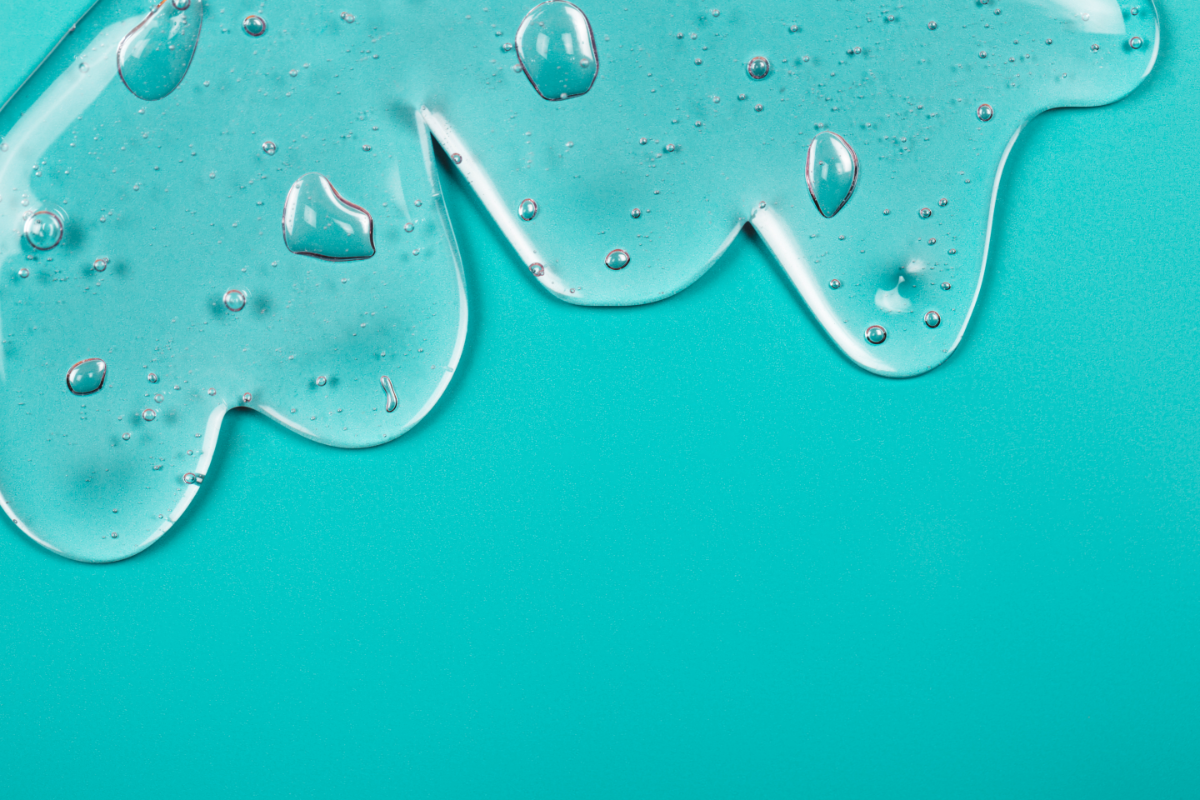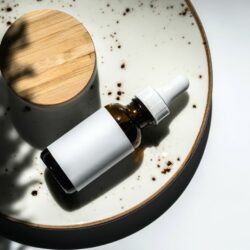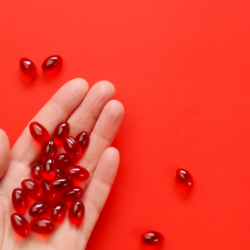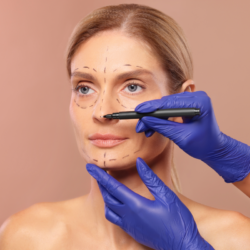Hello, skincare enthusiasts! Have you ever wondered: “Glycerin or hyaluronic acid: what’s the difference for my skin? Well, we’re here to enlighten you. They’re both essential elements of skincare, but understanding them can seem a little confusing. Don’t panic, we’ll explain everything in detail.
Glycerin: What is it?
Glycerine, also known as glycerol, is an organic compound found everywhere in nature. In its pure form, it is a thick, viscous, colourless, odourless liquid with a sweet taste. Derived from vegetable or animal fats, glycerine is obtained by saponification or hydrolysis of fats. It is also produced synthetically from propylene. Because of its versatile nature, glycerine is widely used in a variety of industries, from cosmetics to the food industry.
Glycerine in skin care products
Glycerine is a mainstay of the cosmetics industry. It is one of the most commonly used ingredients in skin care products, such as creams, lotions, soaps and even make-up.
Its humectant properties are unrivalled. Glycerine attracts water from the surrounding air and from the lower layer of the skin, then holds it on the surface. In doing so, it helps to keep the skin hydrated, preventing dryness and irritation. It can also form a protective barrier on the skin’s surface, minimising moisture loss. Glycerine is also known for its softening properties. It helps to soften the skin, making it smoother and more elastic. It’s also a non-comedogenic ingredient, which means it doesn’t block the skin’s pores, minimising the risk of pimples and acne.
Hyaluronic acid: What is it?
Hyaluronic acid is a substance naturally present in our bodies, particularly in our skin and joints. It has an amazing capacity to retain water, up to 1000 times its weight in water, making it an excellent moisturiser.
Hyaluronic acid in skin care products
Hyaluronic acid is found in a wide range of skincare products, including serums, creams and lotions. It helps improve skin elasticity and reduce the appearance of fine lines and wrinkles.
Glycerin or hyaluronic acid: What’s the difference for my skin?
Both ingredients have moisturising properties, but they work in slightly different ways. Glycerine attracts moisture, while hyaluronic acid retains it, giving your skin a fuller, smoother appearance.
The benefits of glycerine for the skin
Navigating the world of skincare can be complex, with an incredible number of ingredients to be aware of. However, some stand out for their effectiveness and benefits. One of these ingredients is glycerine. In this section, we’ll explore the many benefits of glycerine for the skin, a component that may already be present in your skincare routine without you even knowing it.
Moisturising
Glycerine is an exceptional moisturiser. Thanks to its humectant properties, it can not only attract water, but also retain it, helping to keep skin hydrated. The result: soft, supple, visibly smooth skin.
Hydration is essential for maintaining a healthy, robust skin barrier. Well-hydrated skin is better able to fight off external aggressors, including free radicals and environmental pollutants, which can cause premature skin ageing.
Skin protection
As well as its moisturising properties, glycerine plays a fundamental role in protecting the skin. It creates a protective barrier on the skin’s surface, helping to prevent moisture loss. This barrier also helps protect the skin from external aggressors, such as environmental pollutants and harmful micro-organisms.
In short, glycerine is a real ally for the skin. Not only does it help maintain optimal hydration, it also protects the skin, helping to keep it healthy and youthful.
The benefits of hyaluronic acid for the skin
Hyaluronic acid is a key molecule in skincare, recognised for its highly moisturising properties and its anti-ageing benefits. In this section, we reveal the multiple benefits of hyaluronic acid for the skin, a real ally in maintaining a radiant complexion and healthy skin.
Hydration
Hyaluronic acid is a powerful moisturiser, known for its ability to attract and retain water. Its presence can significantly improve skin hydration, making it softer and smoother. Hydration is a key element in preserving the skin’s radiance and vitality. Properly hydrated skin is more resistant to external aggressions and renews itself more effectively which helps to maintain a fresh, radiant complexion.
Anti-ageing
In addition to its moisturising properties, hyaluronic acid is also a major player in the fight against the signs of ageing. Because of its amazing ability to retain water, it can help minimise the appearance of fine lines and wrinkles. This plumping effect makes the skin appear smoother and firmer, helping to give it a more youthful appearance. What’s more, well-hydrated skin is better able to fight the signs of skin ageing. By helping to maintain a good level of hydration, hyaluronic acid plays an essential role in preserving the skin’s youthful appearance and radiance.
Comparison between glycerine and hyaluronic acid
There are several key differences between glycerine and hyaluronic acid. Glycerine is a humectant that draws water from the air and skin to help maintain hydration. It has a viscous texture and has been used for decades for its moisturising benefits.Hyaluronic acid, on the other hand, is a substance naturally present in our skin and capable of retaining up to 1000 times its weight in water. It not only improves skin hydration, but also contributes to its elasticity and firmness, offering an anti-ageing effect. What they both have in common, however, is their incredible ability to hydrate the skin. So it’s worth combining them in a skincare routine for maximum hydration.
| Criteria | Glycerin | Hyaluronic Acid |
|---|---|---|
| Nature | Humectant | Polysaccharide |
| Origin | Vegetable or animal fats, or synthetic | Naturally present in the body |
| Properties | Attracts and retains water | Retains up to 1000 times its weight in water |
| Effects on the skin | Hydration, softness, protection of the skin barrier | Hydration, improved elasticity, anti-ageing effect |
| Applications | Creams, lotions, soaps | Serums, creams, lotions |
| Ideal for | Dry skin, need for hydration | Mature skin, fighting the signs of ageing |
How do I choose between glycerine and hyaluronic acid?
The choice between glycerine and hyaluronic acid depends essentially on your skin type and your specific skincare needs.
- If you have dry skin, glycerine may be more suitable for you. It attracts water from the surrounding air to hydrate the skin and forms a protective barrier to prevent moisture loss.
- If you have mature skin or want to combat the signs of ageing,hyaluronic acid would be a more appropriate choice. With its amazing ability to retain water, it helps improve skin elasticity and minimise the appearance of fine lines and wrinkles.
It’s also important to note that these two ingredients can be used together for optimum moisturising effect. Ultimately, the choice depends on your individual needs and it’s always advisable to consult a skin care professional if you’re unsure which product would be most beneficial for you.
What is transepidermal water loss or TEWL?
Transepidermal water loss, or TEWL, refers to the amount of water that evaporates from the skin into the surrounding atmosphere. This is a natural phenomenon that occurs continuously, independently of perspiration due to physical activity or heat.
TEWL is a valuable indicator of the integrity and function of the skin barrier. High TEWL often indicates that the skin barrier is damaged or weakened. This can occur as a result of various factors, such as age, climatic conditions, skin diseases such as eczema, or the use of inappropriate skin care products.
Healthy skin has a low TEWL, which means it is able to retain moisture and resist external aggression. Conversely, dry, dehydrated or damaged skin will tend to have a higher TEWL, which can lead to a dull complexion, a feeling of discomfort and the appearance of signs of premature ageing. This is why maintaining a good level of skin hydration and strengthening the skin barrier are essential to prevent excessive transepidermal water loss and preserve the health and beauty of the skin.
FAQ
- Can I use glycerine and hyaluronic acid together?
Yes, you can use both together. They have complementary moisturising properties and can work together to hydrate the skin.
- Which is better, glycerine or hyaluronic acid?
There’s no such thing as better or worse. It all depends on your skin type and your specific skincare needs.
- Are glycerine and hyaluronic acid safe for all skin types?
Yes, in general, glycerine and hyaluronic acid are safe for all skin types. However, if you have sensitive skin, it’s always best to do a skin test before using them.
- Are hyaluronic acid and glycerine natural?
Yes, both are natural. Glycerine is a natural by-product of soap-making, while hyaluronic acid is a substance naturally present in our bodies.
- Can glycerine and hyaluronic acid dry out the skin?
No, on the contrary, they are both effective moisturisers that help to keep the skin hydrated.
- Are glycerine and hyaluronic acid comedogenic?
No, neither glycerine nor hyaluronic acid are comedogenic, meaning they do not block the skin’s pores.
References :
- https://journals.sagepub.com/doi/full/10.1177/1091581819883820
- https://www.accessdata.fda.gov/scripts/cdrh/cfdocs/cfcfr/
- https://pubchem.ncbi.nlm.nih.gov/compound/glycerol#section=Top
- https://pubmed.ncbi.nlm.nih.gov/34445455/
- https://pubmed.ncbi.nlm.nih.gov/32517278/
- https://pubmed.ncbi.nlm.nih.gov/30287361/





